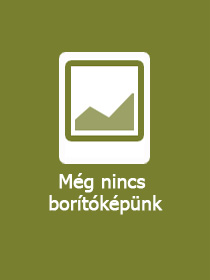
| ISBN13: | 9781399538695 |
| ISBN10: | 1399538691 |
| Kötéstípus: | Keménykötés |
| Terjedelem: | oldal |
| Méret: | 244x170 mm |
| Nyelv: | angol |
| Illusztrációk: | 237 illustrations (231 colour images, 2 colour maps and 4 tables) |
| 700 |
Princes, Dervishes and Dragons
GBP 150.00
Kattintson ide a feliratkozáshoz
Assembled digitally from worldwide collections, this Arcade of 36 colourful tile panels exposes for the first time religious themes as well as more traditional themes for architectural decoration, and adds a new work to the canon of seventeenth-century Persian art.
Toward the end of the nineteenth century much of Iran’s architectural heritage gave way to urban development. Among the casualties were the seventeenth-century Safavid palaces of Isfahan. Local dealers salvaged a series of astonishingly beautiful pictorial arch-shaped panels composed of cuerda seca tiles from one of these. Beginning in 1911 whole panels and many single tiles were sold through Hagop Kevorkian. The authors have assembled (digitally) 36 friezes once part of this set.
The iconographic program consisted of three themes: secular pastimes (picnics, hunt, games), Persian literary episodes, and religious festivals (e.g., the Ashura). The first two themes have a long history in Iranian mural painting, but the third was new and will be of interest to cultural historians. The friezes are stylistically datable to c. 1685-95. One clue to the identity of the original site is the duplication of almost all the friezes. The authors deduce that the scenes were paired across a courtyard and suggest three possible sites. Fully assembled, the suite emerges as a hitherto unknown, outstanding creation that should be added to the canon of Safavid art.
List of FIgures
List of Tables
Preface
Series Editor's Foreword
Map of Iran, Major Cities
Map of Isfahan in the Seventeenth and Eighteenth Centuries
I. The Safavid Tile Arcade in Context
1. Introduction
2. Creating and Recreating the Friezes
3. Precedents for Tile Panels in Black-line Technique; the Hasht Behesht Palace
4. The Art and Artists of the Tile Arches
5. The Iconographic Program
6. The Quest for the Original Site
7. The 'Afterlife' of the Safavid Arcade
II. Catalogue of Friezes
8. The Catalogue of Friezes
Concordance of Spandrel Numbering (Catalogue Numbers and SP Numbers)
References
Index






